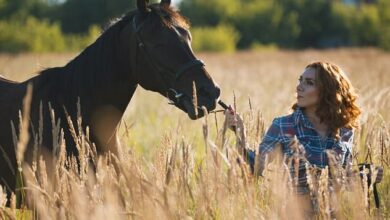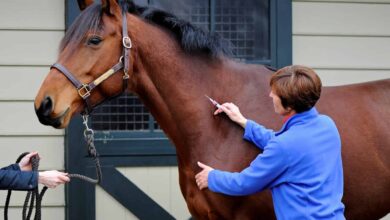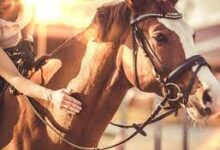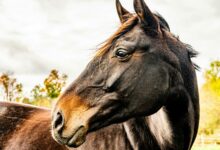Gaits are typically categorized into two groups: the “natural” gaits that most horses will use without special training, and the “ambling” gaits that are various smooth-riding four-beat footfall patterns that may appear naturally in some individuals. Special training is often required before a horse will perform an ambling gait in response to a rider’s command.
Another system of classification that applies to quadrupeds uses three categories: walking and ambling gaits, running or trotting gaits, and leaping gaits.
The British Horse Society Dressage Rules require competitors to perform four variations of the walk, six forms of the trot, five leaping gaits (all forms of the canter), halt, and rein back, but not the gallop. The British Horse Society Equitation examinations also require proficiency in the gallop as distinct from the canter.
The so-called “natural” gaits, in increasing order of speed, are the walk, trot, canter, and gallop.[5] Some consider these as three gaits, with the canter a variation of the gallop, even though the canter is distinguished by having three beats[clarification needed], whereas the gallop has four beats. All four gaits are seen in wild horse populations. While other intermediate speed gaits may occur naturally to some horses, these four basic gaits occur in nature across almost all horse breeds. In some animals the trot is replaced by the pace or an ambling gait.Horses who possess an ambling gait are usually also able to trot.








